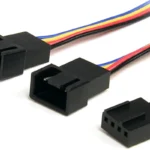Shrinking clothes can be a useful skill. Maybe you have a shirt that’s too big. Or you bought pants that don’t fit quite right. Learning how to shrink clothes can help fix these problems.
The best way to shrink clothes is to wash them in hot water and dry them on high heat. This method works well for many types of fabric. But it’s important to know what your clothes are made of first.
Different fabrics shrink in different ways. Natural fibers like cotton and wool shrink more easily than synthetic fibers like polyester. Knowing your fabric type helps you choose the right method. With the right steps you can safely shrink your clothes to the perfect size.
How to Shrink Your Clothes
Sometimes clothes just don’t fit quite right. Maybe you lost a bit of weight, or perhaps a favorite shirt stretched out in the wash. Whatever the reason, shrinking clothes can be a handy trick to get the perfect fit. Here are some of the best ways to shrink different types of fabrics.
Hot Water Wash and Dry
This is the most common and effective method for shrinking natural fibers like cotton and wool.
- Wash the garment in the hottest water temperature safe for the fabric. Check the care label first!
- Dry the garment on high heat. For wool, use a low-heat setting to prevent felting.
- Check the fit periodically and repeat if needed. Be careful not to over-shrink!
Boiling Water
This method is good for more drastic shrinkage or for stubborn fabrics.
- Bring a large pot of water to a boil.
- Carefully submerge the garment in the boiling water for a few minutes.
- Remove the garment with tongs and lay it flat to dry. Be cautious as the garment will be very hot.
Ironing
This technique works well for targeting specific areas or for delicate fabrics that can’t handle high heat in the dryer.
- Dampen the garment with a spray bottle.
- Set your iron to the highest heat safe for the fabric.
- Iron the garment, focusing on the areas you want to shrink. Use a pressing cloth to protect delicate fabrics.
Fabric-Specific Tips
| Fabric | Best Shrinking Method | Additional Tips |
|---|---|---|
| Cotton | Hot water wash and dry | Cotton shrinks easily, so start with a shorter wash and dry cycle to avoid over-shrinking |
| Wool | Hot water wash and low-heat dry OR hand-wash in hot water and lay flat to dry | Wool is prone to felting (matting and shrinking) if agitated too much, so handle with care |
| Polyester & other synthetics | Hot water wash and high-heat dry OR boiling water | Synthetics are more resistant to shrinking, so you may need to repeat the process or use a more drastic method |
| Denim | Hot water wash and high-heat dry | Denim can shrink significantly, so be mindful of the desired fit |
Remember, shrinking clothes is not always reversible. Always test on a hidden area first, and be cautious to avoid damaging your garments.
Understanding Fabric Types and Shrinkage Conditions
Fabrics react differently to heat and water. Some shrink more than others. Knowing how each fabric behaves helps you avoid unwanted shrinkage.
Fabric Types and Their Reactions to Heat
Cotton shrinks easily when exposed to heat. Wool can shrink and felt if not handled with care. Polyester resists shrinking but may still change shape in high heat.
Silk needs gentle care to avoid damage. Linen may shrink slightly but often relaxes back to its original size. Nylon and spandex are less prone to shrinking.
Denim can shrink a lot especially when new. It’s best to wash it in cold water and air dry to keep its shape.
• Cotton: High shrink risk
• Wool: Can shrink and felt
• Polyester: Low shrink risk
• Silk: Needs gentle care
• Linen: May shrink slightly
• Nylon/Spandex: Low shrink risk
• Denim: Can shrink a lot
The Science of Shrinkage: Fiber Structure and Weave
Fabric shrinkage happens in two main ways: relaxation and progressive. Relaxation shrinkage occurs when fabric relaxes after being stretched during making. Progressive shrinkage happens over time with repeated washing and drying.
The weave of the fabric affects how much it shrinks. Tightly woven fabrics tend to shrink less than loose weaves. Knit fabrics often shrink more than woven ones.
Fiber structure plays a big role too. Natural fibers like cotton and wool shrink more than synthetic ones. This is because they absorb water and swell up when wet.
Care Labels and Precautions
Always check the care label before washing or drying clothes. It gives important info on how to clean the item safely.
Some tips to avoid unwanted shrinkage:
- Use cold water for washing
- Air dry instead of using a dryer
- Follow care label instructions closely
- Use fabric softener to reduce friction
Items marked “dry clean only” should not be washed at home. They need special care to avoid damage.
Be extra careful with delicate fabrics like silk and wool. These may need hand washing or professional cleaning to stay in good shape.
Effective Shrinking Techniques
Shrinking clothes can fix items that are too big. Two main methods work well for this. Let’s look at how to use heat and washing machines to shrink clothes.
Heat-Induced Shrinking Methods
Heat is key for shrinking clothes at home. Hot water is the main tool. You can use a pot on the stove or your sink. Fill it with very hot water. Put your clothes in for 5-10 minutes. This works best for cotton and wool.
For tough fabrics like jeans try boiling water. Be careful not to burn yourself. Dip the jeans in for a few minutes. Then take them out with tongs.
After soaking dry the clothes with high heat. Use a dryer if you have one. If not a hair dryer can work too. The mix of hot water and hot drying shrinks fibers fast.
Machine Washing and Drying Strategies
Your washing machine can shrink clothes too. Use the hottest water setting. Add your clothes and regular detergent. Run a full cycle.
Next dry on high heat. Check every 5-10 minutes. Take items out when they’re the right size. Don’t over-dry or clothes may get damaged.
Some fabrics need special care. Wool and cashmere should use warm not hot water. Dry them flat to avoid stretching.
For less shrinkage use warm water to wash. Then air dry or use low heat in the dryer. This is good for items you want to shrink just a little.
Frequently Asked Questions
Shrinking clothes can be done using different methods. The best way depends on the fabric and how much you want to shrink it. Here are some common questions about shrinking clothes.
What methods are most effective for shrinking cotton garments?
Cotton clothes are easy to shrink. The best way is to wash them in hot water. Then dry them on high heat. Check the dryer often to see how much they’ve shrunk. Take them out when they’re the right size.
Is it possible to shrink clothing using a washing machine?
Yes, you can shrink clothes in a washing machine. Use the hottest water setting for the fabric type. Hot water helps relax the fibers and makes clothes shrink. Choose a regular cycle with a full spin for best results.
Can clothing be shrunk without the use of a dryer?
You can shrink clothes without a dryer. Boil water in a pot. Put the clothes in for about 5 minutes. Take them out and let them cool. Then hang them to dry. This works well for small items like shirts or socks.
What techniques are available for shrinking clothes quickly?
To shrink clothes fast, use very hot water and high heat. Wash the item in the hottest water safe for the fabric. Then dry it on the highest heat setting. Check it often to avoid over-shrinking.
How can you shrink clothes that are too large without damage?
Be gentle when shrinking big clothes. Wash them in warm (not hot) water. Dry on medium heat. Check often and take them out when they fit right. This slow method is less likely to damage the fabric.
What are the best practices for shrinking clothes by hand?
To shrink clothes by hand, fill a sink with hot water. Soak the item for 15 minutes. Rinse with cold water. Squeeze out extra water. Lay it flat to dry. Stretch it to the size you want while it’s wet.







